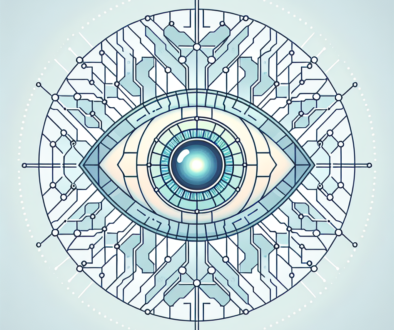Deep Learning Object Detection: Evolution, Technologies & Future Research Directions
The Current Landscape
The field of AI vision and object detection has evolved dramatically in recent years, moving far beyond the well-known YOLO architecture. Today, we’re witnessing a rich ecosystem of detection models, each with its unique strengths and applications. MobileNetSSD, for instance, has emerged as a game-changer in mobile applications, offering an impressive balance between speed and accuracy while operating within the constraints of mobile devices. Its architecture is specifically optimized for edge computing, making it ideal for real-time applications where processing power is limited.
YOLOX represents the next evolution in single-stage detectors, building upon the foundation laid by YOLO while incorporating modern improvements. It addresses many of the limitations found in traditional YOLO models, particularly in detecting smaller objects and offering greater flexibility in training. This makes it particularly valuable for researchers and developers working on specialized applications where both speed and accuracy are crucial.
The Two-Stage Detection Paradigm
The R-CNN family of models takes a different approach, employing a two-stage detection process that prioritizes accuracy over speed. While these models might not be the fastest, their meticulous approach to object detection makes them invaluable in fields where precision is paramount, such as medical imaging or industrial quality control. The trade-off between speed and accuracy has led to interesting developments in the field, with researchers constantly working to optimize both aspects.
EfficientDet has emerged as a particularly interesting solution, offering a scalable architecture that can be adjusted based on available computational resources while maintaining strong performance metrics. This adaptability makes it a valuable tool across different deployment scenarios, from edge devices to cloud-based applications.
Research Directions and Future Prospects
The future of object detection is being shaped by several key research directions. Model efficiency remains a critical focus, with researchers working to create smaller, more efficient models that can run on limited hardware without sacrificing performance. This includes innovations in model compression, quantization, and hardware-specific optimizations.
Accuracy improvements continue to be pursued through various approaches. Researchers are developing more sophisticated feature extraction methods, exploring novel loss functions, and implementing advanced data augmentation techniques. The goal is to create models that can handle increasingly complex scenarios while maintaining reliable performance.
Specialized Applications and Emerging Trends
The field is seeing increasing specialization, with researchers developing models optimized for specific use cases. 3D object detection, small object detection, and real-time tracking are all areas receiving significant attention. These specialized applications often require unique approaches and innovations to address their specific challenges.
Perhaps most exciting are the emerging trends in self-supervised learning and few-shot learning. These approaches aim to reduce the dependency on large labeled datasets, making AI vision more accessible and practical for real-world applications. Multi-modal detection, combining visual data with other types of sensory input, is also showing promise in creating more robust and versatile detection systems.
The Path Forward for Researchers
For those looking to contribute to the field, there are numerous promising research directions. Model compression and efficiency optimization remain crucial areas, especially as AI systems become more prevalent in edge devices. Transfer learning and few-shot learning present opportunities to make AI vision more practical and accessible, while neural architecture search could revolutionize how we design detection models.
The integration of transformer architectures into object detection systems is another exciting frontier, potentially offering new ways to handle complex visual scenes. Additionally, the exploration of bio-inspired architectures could lead to more efficient and robust detection systems.
Practical Applications and Industry Impact
The impact of these developments extends far beyond academic research. Industries from autonomous vehicles to healthcare are benefiting from advances in object detection. Real-time detection systems are becoming more reliable and efficient, opening up new possibilities in surveillance, robotics, and augmented reality applications.
Looking Ahead
As we look to the future, the field of AI vision and object detection continues to evolve rapidly. The integration of quantum computing concepts, the development of more sophisticated neural architectures, and the push toward more efficient and accurate models all suggest a bright future for the field. For researchers and practitioners alike, staying informed about these developments and understanding their implications will be crucial for contributing to this exciting domain.
The journey from traditional computer vision to modern AI-powered object detection has been remarkable, and the road ahead promises even more exciting developments. Whether you’re a researcher, developer, or industry practitioner, there has never been a better time to be involved in this transformative field.

